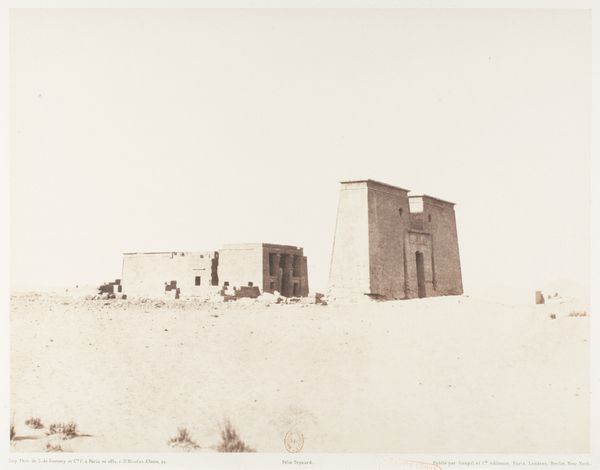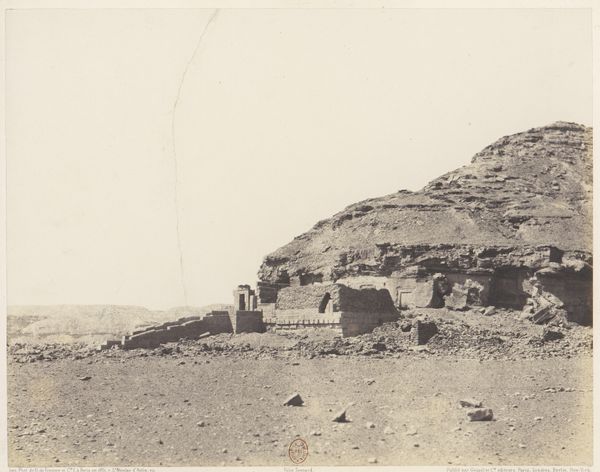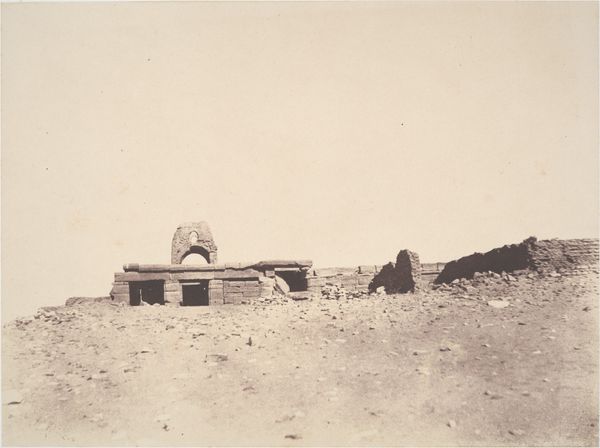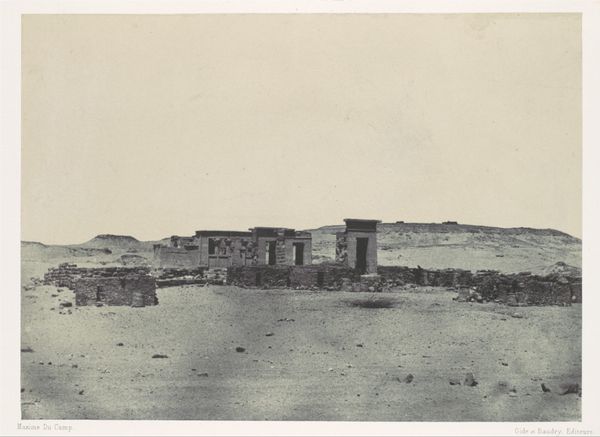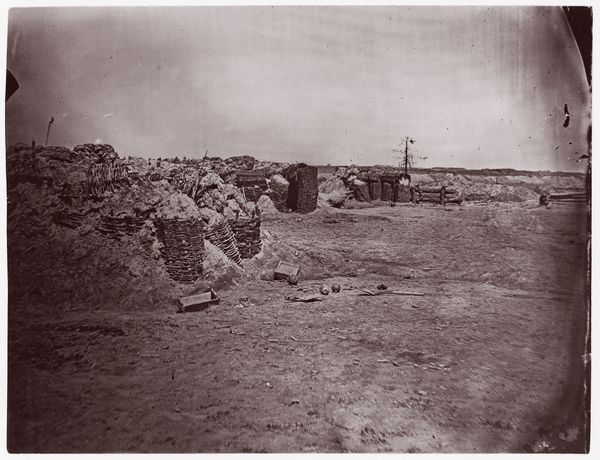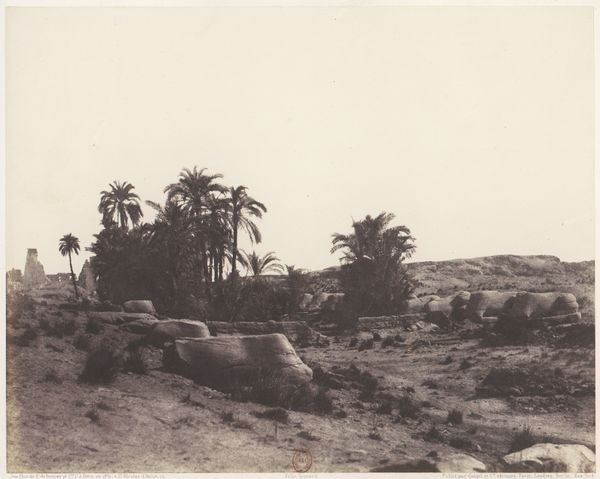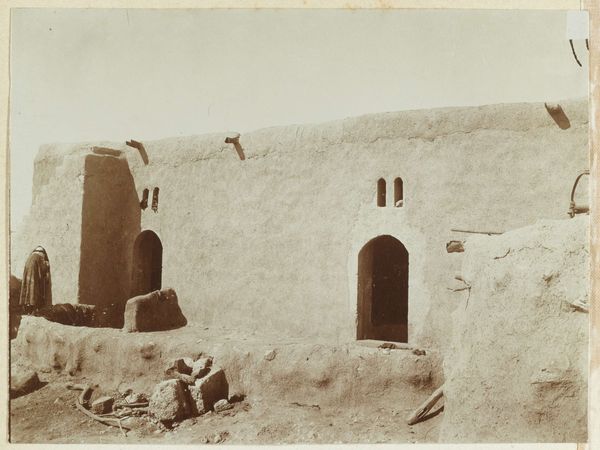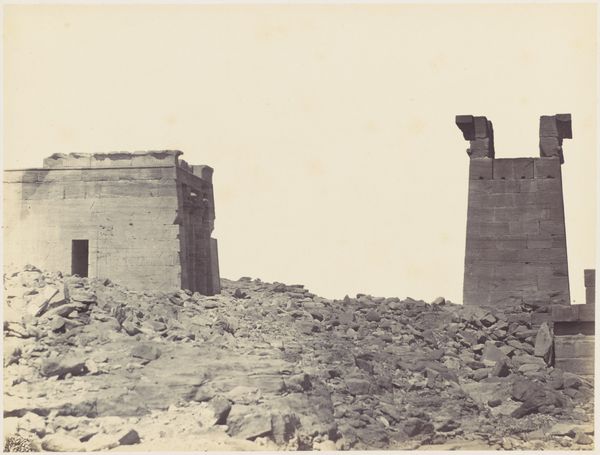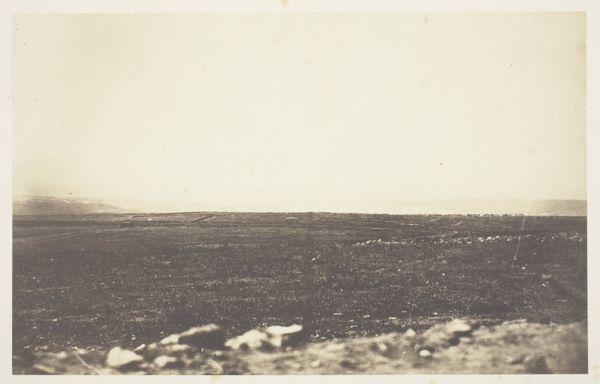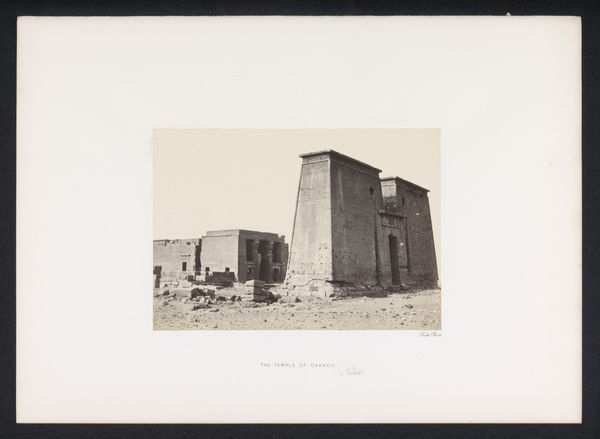
daguerreotype, photography, sculpture, architecture
#
landscape
#
daguerreotype
#
ancient-egyptian-art
#
outdoor photography
#
photography
#
ancient-mediterranean
#
sculpture
#
architecture
Dimensions: Image: 23.8 x 30.6 cm (9 3/8 x 12 1/16 in.) Mount: 39.8 x 51.5 cm (15 11/16 x 20 1/4 in.)
Copyright: Public Domain
Curator: Here we have Félix Teynard's "Séboûah, Vue Générale du Temple," a daguerreotype from 1851. What's your initial take on it? Editor: The sheer desolation is striking. It's this almost unbearable beige monochrome, punctuated by severe architectural forms and slumped figures. There's something geometrically imposing and austere, despite the evident ruin. Curator: Austerity, yes, but consider this image was produced at a time when Egyptology was gaining traction. Photography like this played a huge role in shaping Western perceptions of ancient civilizations. Teynard was part of a larger colonial project documenting and, in many ways, claiming ownership of this history through the lens. Editor: From a purely formal standpoint, look at how Teynard uses the vast expanse of the sky to dwarf the already crumbling temple complex. This overwhelms any sense of human presence, diminishing even the grandeur of ancient architecture to near insignificance against nature. The tonal range is subtle but lends real weight and substance to the sculpted forms of the temple. Curator: Precisely. That emphasis contributes to the power dynamic I mentioned. By capturing these sites, they’re cataloged, rendered almost inert in their presentation. What was once a place of religious and societal vitality becomes an artifact to be analyzed and classified by European scholars. Editor: Though he presents a very specific arrangement, there is no narrative arc in this depiction. As such, a visual vocabulary is left for the modern world to decode, isn't it? What statements, cultural observations or emotions surface from its depths, I think, becomes uniquely defined for anyone who views the artwork. Curator: It’s a view steeped in the aesthetics and politics of its time, showing a particular reading of the past. And ultimately, those original meanings have been changed now due to photography becoming democratized in our age. Editor: Absolutely. Even as its power has altered through societal change, I'll remember the stark and rather compelling arrangement within its picture frame, and how time is both captured and resisted within the landscape it composes. Curator: And I will remember that we must remain vigilant about the history embedded in images and who is creating the image itself. Photography never presents neutral information; these images serve the ideology of their creation just as vividly.
Comments
No comments
Be the first to comment and join the conversation on the ultimate creative platform.

